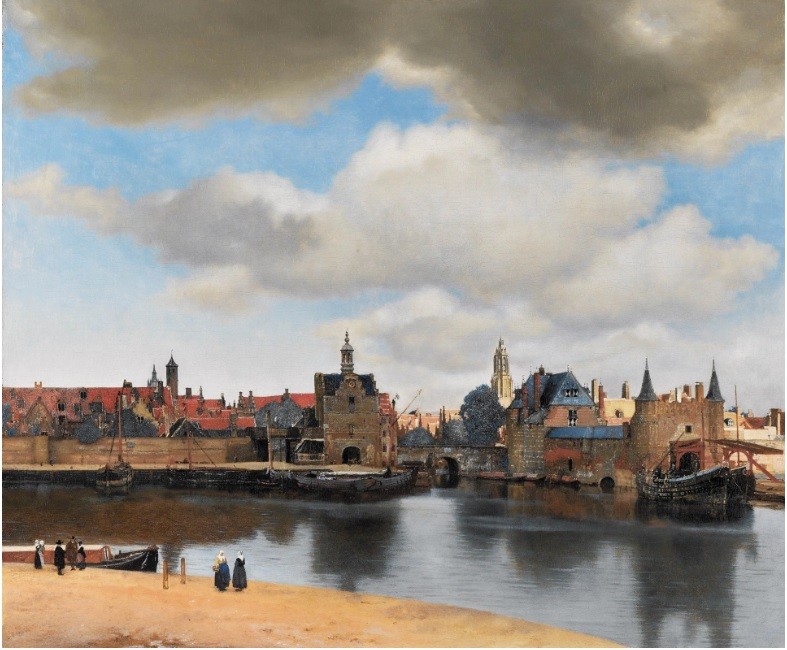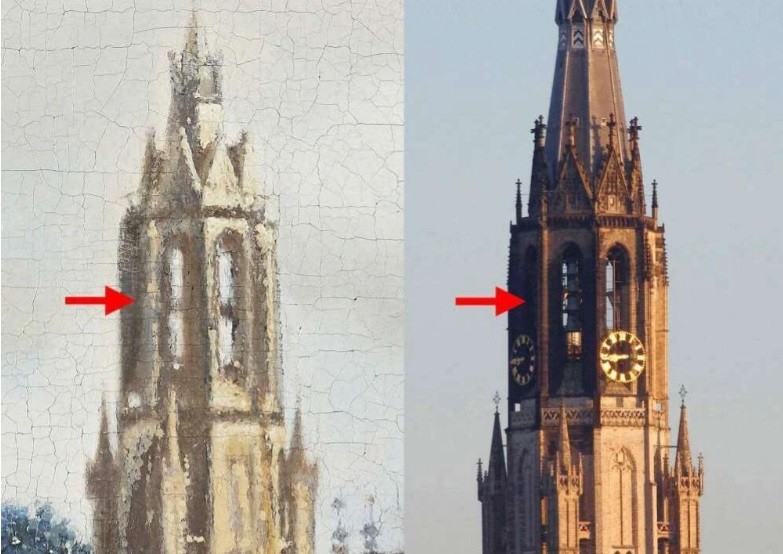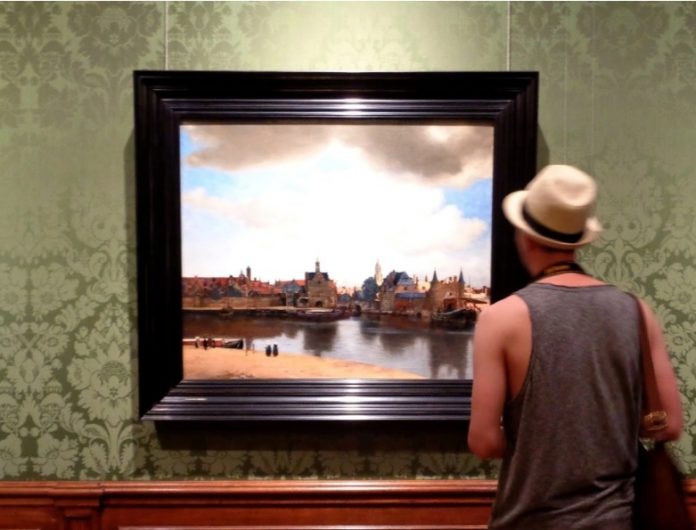Vermeer technically captured the light and shadow in his cityscape but made historians and artists puzzle over the exact date and time of its creation. Scientists were unable to agree on the time of day in the painting, whether the light was coming from the west or whether the sun was right above his head.
“My students and I worked on this project for about a year,” Olson said. – We spent a lot of time studying the topography of the city, using both 17th and 19th century maps and Google Earth”. The professor and his team will publish the results in the September 2020 issue of Sky and Telescope.

Jan Vermeer
1661, 96.5×115.7 cm
” View of the Delft” – the most famous landscape of the XVII century and one of the largest paintings by Jan Vermeer. The interaction of light and shadow, an impressive cloudy sky and subtle reflections in the water make it an absolute masterpiece. It’s a windless day and the city has a calm atmosphere. Vermeer reflected this serenity in his composition, breaking it into three horizontal stripes – water, city, and sky. “He also painted the buildings a little more tidy than they really were,” says The Royal Gallery of Mauritshuis in The Hague, owned the painting since 1822.
Vermeer chose the point of view from the south – from the second floor of the hotel overlooking the city. During the initial research, Olson and his team discovered that the lighting, similar to that in the painting, comes from a southeast source – that is, the morning scene. To improve the accuracy of their measurements on Google Earth, the team had to bring their own “mystery machine” (plane) to Delft and see the landscape with their own eyes.

The most accurate position displaying the sun was light and shadow on the vertical column of the Nieuwe Kerk Tower. This lighting appears for a few minutes in the morning hours. On the left is a fragment of a painting by Vermeer, on the right is a photo of the tower on October 16, 2019. Photo: Mauritshuis, The Hague; Russell Doescher.
Of special interest was the octagonal tower of Nieuwe Kerk (New Church). Somewhere in literature, it was suggested that Vermeer increased its size, but researchers from Texas came to the conclusion that the artist gave it correctly. This discovery allowed the team to calculate the position of the sun in the painting by the shadows on the tower pillars. “This is our key. It’s an accurate indicator of where the sun should be,” Olson said.
Based on that, the team recorded the time on the current tower clock. For years, it has been believed that the scene is depicted “just after 7 am” – the time on the picture shows the clock at the Schiedam Gate. But this is an approximate time, as the minute hands were added to the clock only in the late 19th century. So the alternative reading gave the result “closer to eight”.
Now as for the year. The bells on the Nieuwe Kerk Tower were set in 1660, and the picture shows an empty bell ringer. So Olson and his team knew that the landscape was conceived before that date. By entering the angle of the sun and the time in astronomical software, they narrowed the date ranges to two options, 6-8 April and 3-4 September.
As in all good detective stories, in this riddle was the last “dark fragment” that completed the puzzle – deciduous trees. In the northern climate of the Delft foliage blossoms only at the end of April, which excludes spring dates. That’s what finally solved the problem.
Vermeer’s “View of the Delft” was most likely inspired by the scene he observed on 3 September 1659 (or the year before) at around 8 a.m. local time.
“Vermeer was known to work slowly. Transmitting all the details on his large-scale masterpiece could take weeks, months, or even years,” Olson stresses. – His surprisingly accurate depiction of the characteristic and fleeting play of light and shadows in Nieuwe Kerk suggests that at least this detail he painted, directly observing the sunlit tower that rises above the walls and roofs of the Delft”.
This study is undoubtedly interesting from the point of view of scientific and educational practice, but is it worth interpreting the paintings as if they were photographs?

























